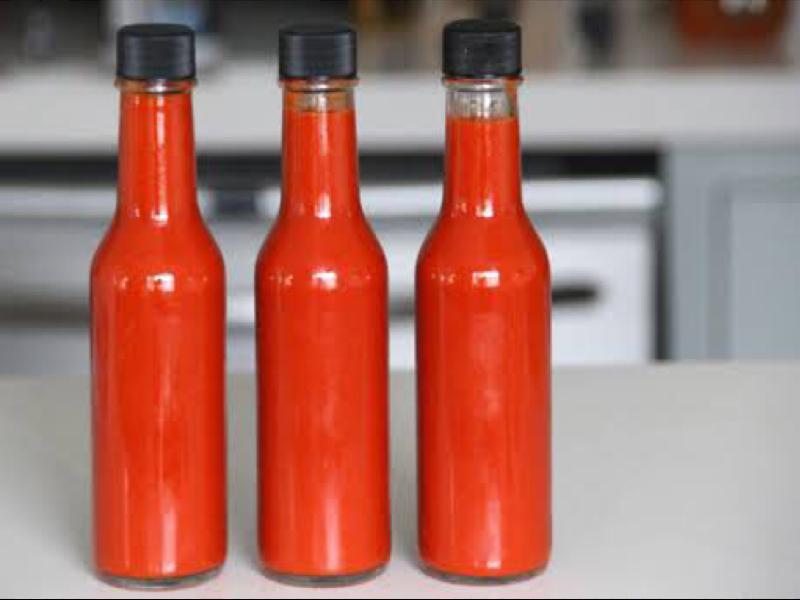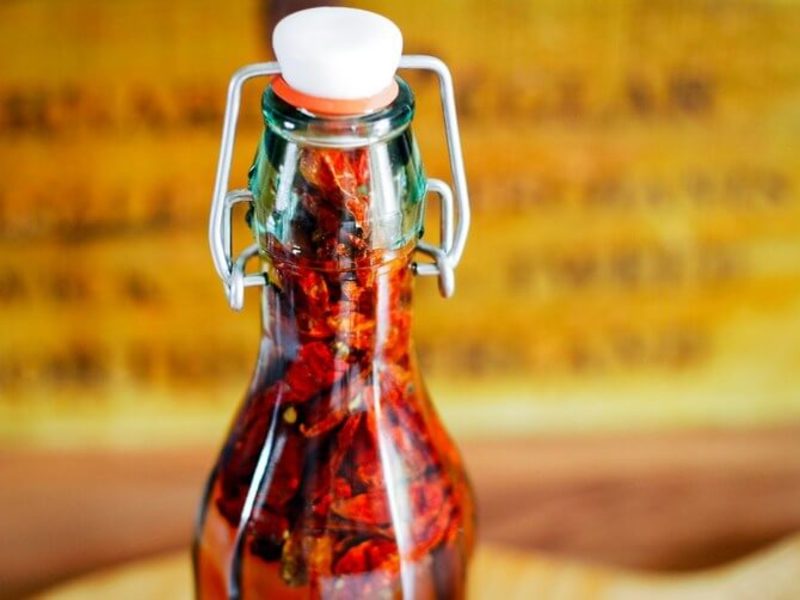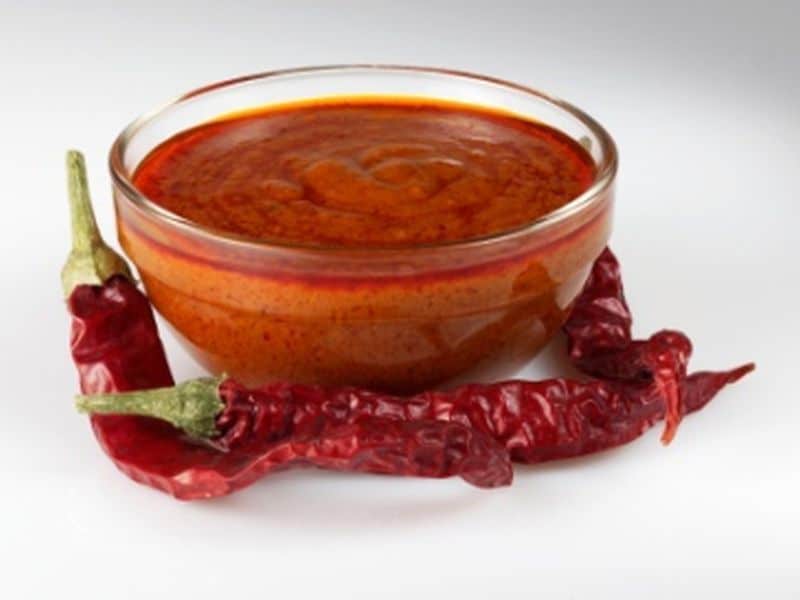A Guide to Different Types of Hot Sauce and Their Flavor Profiles
Introduction:
Hot sauce, a flavorful condiment made from various chili peppers, vinegar, and spices, is widely enjoyed around the world. With countless variations in taste, heat levels, and ingredients, hot sauce is a versatile addition to numerous dishes, from Mexican cuisine favorites to international delicacies. This article aims to provide a comprehensive overview of the different types of hot sauce, highlighting their distinct flavors and popular usage.
1. Tabasco Sauce:
Tabasco sauce is one of the most well-known and widely available hot sauces. Originating from Avery Island, Louisiana, it is made from Tabasco peppers, vinegar, and salt. Known for its signature vinegary tang and medium heat intensity, Tabasco sauce pairs perfectly with dishes like seafood, soups, stews, and Bloody Mary cocktails.
2. Sriracha Sauce:
Originating from Thailand, Sriracha sauce has gained immense popularity worldwide. Made primarily from red chili peppers, garlic, vinegar, salt, sugar, and sometimes preservatives, Sriracha sauce offers a tangy, slightly sweet, and garlicky flavor profile. Its versatility makes it suitable for a wide range of dishes, including stir-fries, noodles, sandwiches, and as a dipping sauce for sushi or spring rolls.
3. Louisiana Hot Sauce:
As the name suggests, Louisiana hot sauce hails from the Southern United States. It is made with a mix of aged peppers, vinegar, salt, and spices. Louisiana hot sauce typically features a vinegary flavor coupled with a moderate to high level of heat. This sauce is excellent for adding a fiery kick to traditional Southern dishes such as jambalaya, gumbo, and fried chicken.
4. Chipotle Sauce:
Chipotle peppers, which are dried and smoked jalapeño peppers, are the primary ingredient in chipotle sauce. The smoky and earthy flavor, combined with mild to medium heat, makes this sauce a favorite among barbecue enthusiasts. Chipotle sauce is ideal for grilling and marinating meats, enhancing the flavor of burgers, tacos, and roasted vegetables.
5. Habanero Sauce:

Habanero sauce is characterized by its intense heat and fruity flavors. Made from habanero peppers, vinegar, and spices, this sauce delivers a fiery punch to dishes. It works well in recipes where the heat level needs to be balanced with the underlying fruity notes. Habanero sauce is ideal for adding a kick to fruit salsas, ceviche, and spicy salsa recipes.
6. Mexican-style Hot Sauce:
Traditional Mexican-style hot sauces, like Cholula and Valentina, offer a mild to medium level of heat. These sauces are known for their balanced flavors, combining chili peppers, vinegar, salt, garlic, and sometimes spices. They are versatile and can be used in various Mexican dishes, such as tacos, enchiladas, and huevos rancheros.
7. Asian-style Hot Sauce:
Asian-style hot sauces, such as Korean Gochujang and Chinese Doubanjiang, vary greatly in flavor and intensity. Gochujang, made from fermented soybean paste and chili powder, has a deep and complex flavor with a moderate spiciness. Doubanjiang, on the other hand, is a spicy and salty paste made from fermented broad beans and chili peppers, commonly used in Szechuan cuisine. These sauces are used in stir-fries, marinades, and dipping sauces.
8. Caribbean-style Hot Sauce:
Caribbean-style hot sauces, like Scotch bonnet pepper sauce, offer a unique blend of spiciness and tropical flavors. Scotch bonnet peppers, a staple in Caribbean cuisine, provide a fiery heat accompanied by fruity and citrusy undertones. This sauce is commonly used in dishes like jerk chicken, seafood, and tropical fruit salsa.
9. International Hot Sauces:
Apart from the aforementioned styles, hot sauces from different parts of the world offer diverse flavor profiles. Peri-Peri sauce, originating from Africa, combines chili peppers, garlic, citrus, and spices for a tangy and spicy flavor. Harissa, a North African chili paste, boasts a smoky and fiery taste and is often used in Moroccan and Tunisian cuisine. These international hot sauces bring unique and exciting flavors to dishes from their respective regions.
Conclusion:
With an extensive range of hot sauce variations available worldwide, there’s a flavor profile to suit every palate. Whether you prefer a mild tanginess or a fiery, mouth-tingling experience, the multitude of hot sauces ensures that you can find the perfect companion for your favorite dishes. Experimenting with different types of hot sauce can add an extra dimension of taste and excitement to your culinary adventures.Title: A Guide to Different Types of Hot Sauce and Their Flavor Profiles
Introduction:
Hot sauce, a flavorful condiment made from various chili peppers, vinegar, and spices, is widely enjoyed around the world. With countless variations in taste, heat levels, and ingredients, hot sauce is a versatile addition to numerous dishes, from Mexican cuisine favorites to international delicacies. This article aims to provide a comprehensive overview of the different types of hot sauce, highlighting their distinct flavors and popular usage.

1. Tabasco Sauce:
Tabasco sauce is one of the most well-known and widely available hot sauces. Originating from Avery Island, Louisiana, it is made from Tabasco peppers, vinegar, and salt. Known for its signature vinegary tang and medium heat intensity, Tabasco sauce pairs perfectly with dishes like seafood, soups, stews, and Bloody Mary cocktails.
Tabasco sauce has a rich history dating back to the 1860s when it was first produced by Edmund McIlhenny. The sauce is aged in oak barrels for up to three years, enhancing its flavor and complexity. Its distinct, vinegar-based tang adds a zing to any dish without overpowering the other flavors. Due to its balanced heat and versatility, Tabasco sauce has become a staple in many households and restaurants worldwide.
2. Sriracha Sauce:
Originating from Thailand, Sriracha sauce has gained immense popularity worldwide. Made primarily from red chili peppers, garlic, vinegar, salt, sugar, and sometimes preservatives, Sriracha sauce offers a tangy, slightly sweet, and garlicky flavor profile. Its versatility makes it suitable for a wide range of dishes, including stir-fries, noodles, sandwiches, and as a dipping sauce for sushi or spring rolls.
Sriracha sauce rose to global fame through the Huy Fong Foods brand, which introduced it to the United States in the 1980s. The sauce boasts a unique and addictive combination of flavors, making it a favorite among spicy food enthusiasts. Its moderate heat level adds a pleasant kick to dishes without overwhelming the palate. Due to its growing popularity, many food manufacturers have introduced their own versions of Sriracha sauce, allowing for even more variation and customization.
3. Louisiana Hot Sauce:
As the name suggests, Louisiana hot sauce hails from the Southern United States. It is made with a mix of aged peppers, vinegar, salt, and spices. Louisiana hot sauce typically features a vinegary flavor coupled with a moderate to high level of heat. This sauce is excellent for adding a fiery kick to traditional Southern dishes such as jambalaya, gumbo, and fried chicken.
Louisiana hot sauce has deep roots in the region’s culinary history. Dating back to the early 1900s, brands like Crystal and Louisiana Hot Sauce have become synonymous with Southern cuisine. The unique combination of heat and vinegary tang adds a distinctive flavor to dishes, enhancing their overall taste. Louisiana hot sauce has also found its way into global cuisines, adding a spicy twist to various dishes worldwide.
4. Chipotle Sauce:
Chipotle peppers, which are dried and smoked jalapeño peppers, are the primary ingredient in chipotle sauce. The smoky and earthy flavor, combined with mild to medium heat, makes this sauce a favorite among barbecue enthusiasts. Chipotle sauce is ideal for grilling and marinating meats, enhancing the flavor of burgers, tacos, and roasted vegetables.
The distinctive smoky flavor of chipotle peppers adds depth and complexity to dishes. The process of smoking the jalapeños gives chipotle sauce a unique and memorable taste. The moderate heat level allows for the flavors to shine without overwhelming the palate. Chipotle sauce has gained popularity in the culinary world, finding its way onto menus in restaurants and BBQ joints offering a Southwestern or Tex-Mex twist.
5. Habanero Sauce:

Habanero sauce is characterized by its intense heat and fruity flavors. Made from habanero peppers, vinegar, and spices, this sauce delivers a fiery punch to dishes. It works well in recipes where the heat level needs to be balanced with the underlying fruity notes. Habanero sauce is ideal for adding a kick to fruit salsas, ceviche, and spicy salsa recipes.
Habanero sauce is not for the faint of heart, as its intense spiciness can overwhelm those unaccustomed to heat. The habanero pepper’s fruitiness adds a unique element to the sauce, allowing for a balance between heat and flavor. Due to its potency, habanero sauce is often used in small quantities, adding a burst of heat and character to dishes. For chili lovers, habanero sauce is a must-have to elevate the spiciness of their creations.
6. Mexican-style Hot Sauce:
Traditional Mexican-style hot sauces, like Cholula and Valentina, offer a mild to medium level of heat. These sauces are known for their balanced flavors, combining chili peppers, vinegar, salt, garlic, and sometimes spices. They are versatile and can be used in various Mexican dishes, such as tacos, enchiladas, and huevos rancheros.
Mexican-style hot sauces are a cornerstone of Mexican cuisine, adding the perfect touch of spice to many dishes. Brands like Cholula and Valentina have become household names, offering a range of flavors and heat levels. These sauces are often drizzled over tacos, used as a dipping sauce for tortilla chips, or incorporated into marinades and dressings. Mexican-style hot sauces are adored for their ability to enhance the flavors of traditional Mexican cuisine without overpowering them.
7. Asian-style Hot Sauce:
Asian-style hot sauces, such as Korean Gochujang and Chinese Doubanjiang, vary greatly in flavor and intensity. Gochujang, made from fermented soybean paste and chili powder, has a deep and complex flavor with a moderate spiciness. Doubanjiang, on the other hand, is a spicy and salty paste made from fermented broad beans and chili peppers, commonly used in Szechuan cuisine. These sauces are used in stir-fries, marinades, and dipping sauces.
Asian-style hot sauces showcase the diverse and rich culinary traditions of the continent. Gochujang, often considered the backbone of Korean flavors, provides a balance of heat, sweetness, and umami. It is frequently used in Korean dishes like bibimbap, tteokbokki, and barbecue. Doubanjiang, on the other hand, adds a spicy punch to Szechuan cuisine, creating bold and flavorful dishes. These hot sauces are crucial for capturing the unique taste of Asian cuisine and are beloved by food enthusiasts worldwide.
8. Caribbean-style Hot Sauce:
Caribbean-style hot sauces, like Scotch bonnet pepper sauce, offer a unique blend of spiciness and tropical flavors. Scotch bonnet peppers, a staple in Caribbean cuisine, provide a fiery heat accompanied by fruity and citrusy undertones. This sauce is commonly used in dishes like jerk chicken, seafood, and tropical fruit salsa.
Caribbean-style hot sauces are synonymous with the vibrant and bold flavors of the region. Scotch bonnet pepper sauce, in particular, showcases the Caribbean’s love for heat and tropical flavors. The potent combination of heat and fruity notes adds depth and complexity to dishes. The sauce’s versatility allows it to be used in traditional Caribbean dishes, as well as a flavor enhancer for grilled meats, seafood, and fruit-based dishes.
9. International Hot Sauces:
Apart from the aforementioned styles, hot sauces from different parts of the world offer diverse flavor profiles. Peri-Peri sauce, originating from Africa, combines chili peppers, garlic, citrus, and spices for a tangy and spicy flavor. Harissa, a North African chili paste, boasts a smoky and fiery taste and is often used in Moroccan and Tunisian cuisine. These international hot sauces bring unique and exciting flavors to dishes from their respective regions.

International hot sauces open up a whole new world of flavors and heat levels. Peri-Peri sauce, originating from countries like Mozambique and South Africa, has gained popularity for its tangy and spicy profile. It is widely used as a marinade for grilled meats or as a spicy condiment. Harissa, on the other hand, adds a distinctive North African touch to dishes. Its smoky flavor, combined with spicy heat, elevates Moroccan and Tunisian cuisine. Exploring international hot sauces allows culinary enthusiasts to experiment with unique flavors and expand their palate.
Conclusion:
From the vinegary tang of Tabasco sauce to the smoky depth of chipotle sauce, and the fiery kick of habanero sauce, the world of hot sauce offers an array of flavors to explore. Each type of hot sauce brings its unique characteristics and heat levels, enhancing dishes with a burst of spice and adding depth to flavors. Whether used as a condiment, marinade, or ingredient, hot sauce has become an essential element in various cuisines worldwide. By understanding the distinct flavor profiles and popular usage of different hot sauce types, individuals can embark on a sensory journey and tailor their culinary creations to suit their personal preferences.









